Multilayer Ceramic Layering
Multilayer Ceramic Layering: Systematic Approach Technique for the Ceramic Build up between the Facial and the Lingual area
ABSTRACT
To perfectly replicate the natural look of the tooth the technicians must often call upon their artistic abilities in order to reconstruct the dental structures.
Elaborate stratification methods have been proposed by the most distinguished ceramists around the world, but, this tecnique shows the presence of two layers of translucents incisal walls and up of each of them modifiers and colors are apported and blended in harmoniusly via infiltration.
KEYWORDS
Multilayer double incisal wall, Incisal effects, Lingual layering.
INTRODUCTION
The multilayer ceramic technique is still nowadays a systemaic method to create teeth simulating natural appearance.
The due of the ceramist is to know as better as he can all the ceramic effects in order to make the suitable ceramic build up with the right position of thr ceramic masses.
CLINICAL SIGNIFICANCE
The method presented is a rational and didactict adaptation of the dentoenamel layering found in nature, so the ceramist can expertly arrange many layers of ceramic materials.
This procedure can be used for every type of ceramic material as veeners (on refractory or pressed ceramic), metal ceramic, pressed ceramic, zirconia ceramic, allumina ceramic, lithium disilicate and titanium.
CONCLUSION
The technique described in this manuscript is focused on the experience of the dental technician which will be able to reproduce the ceramic build up very close to the nature. This will allow to create esthetic rehabilitations with special effects in order to achieve an high level quality of work. Ceramic is widely acknowledge to be the most reliable material for esthetics and functional long term restorative treatment.
However this material does not posses the same characteristics as natural teeth, exhibiting significant limitations in structure, color and surface texture. These differences require the dental ceramist to develop significant skill and in-depth knowledge of ceramic material to achieve the most natural-looking restorations.
Simulation of natural teeth can not be implemented by using only three or four ceramic layers; the difficult and time consuming process of ceramic stratification requires the ceramist to expertly arrange many layers of ceramic materials.
There are two different approches to the ceramic stratification process:1
1. Ordered Stratification: Ceramic is layered in a precise order to simulate dental structure. The stratification process begins with opaque dentine, continues with dentin and finishes with enamel and transparent layers. The effect is a static progression from a high degree of opacity internally to absence of opacity at the exterior. In this consistent and orderly stratification, each new layer is less opaque than the underlying layer.
2. Order Disordered Stratification: Ceramic is layered in more nuanced fashion. The technician again starts with maximum opacity at the interior and gradually introduces layers with different degrees of opacity and translucence.
Using the second tecnique, there may be areas where an opaque layer is applied after a less opaque layer, or where a more transparent layer lies below a less transparent layer
The light effects change substancially in such areas, since greater amount of light is reflected or absorbed by the ceramic material, which enhances the perceived depth of the restoration. Transparency lies under rather than above an enamel layer, causing light to distribute throughout the crown.2-6
CERAMIC LAYERING TECHNIQUE
Labial Stratification
To apport the shoulder ceramic masse in a cervical area the collar of the coping is reduced,7-9 but, for full ceramic systems as pressed ceramic, zirconia, allumina and lithium disilicate the technique does not require to cut the zone mentioned above.
A thin layer of opaque dentin covers the entire surface of the crown, while an opaque dentine with greater brilliance and high fluorescence is positioned between the middle and incisal thirds of the tooth. (Fig. 1)
The tooth’s anatomic shape is built up with the dentin material on top of the first layer of opaque dentin, and then trimmed to create space for the colors, colormodifiers and translucent. (Figs. 2,3)
On the first incisal wall, translucent enamel and translucent opalescent materials are introduced in the mamelon site where the dentin material has been trimmed.10
Translucent porcelain with highly fluorescent properties and iridiscent characteristics can improvethe brilliance in this area.
The chromatic monotony in the cervical third can be interrupted by adding a layer of high value porcelain. (Figs. 4,5)
Modifiers and colors with different degree of fluorescence are layerd on the first incisal wall to increase luminosity and create contrast.11 (Fig. 6)
Customized ceramic effects are developed during stratification and should not be left to the end of the process and layered solely on the exterior surface. The desired result is achieved by layering ceramic and colors in between the dentin and the enamel layers, while keeping the entire restoration moist.
The double sandwich technique starts adding over the first characterized incisal wall, a second incisal wall composed with different kinds of enamels and translucents.12-15 (Fig. 7)
Over this last one modifiers and colors are apported which are in turn covered by enamel and translucent materials. (Fig. 8a,b)
This type of custom stratification creates greater contrast and gives the restoration the most natural appearance. Infact mainteining the ceramic material moist the effects can infiltrate inside the different layers and they create contrast as the natural tooth has as well.
The incisal wall deserves more attention during stratification since this area can be customized by applying a wide variety of porcelains with no rules and no schemes, and the incisal edge can be completed with vertical layers of enamel and translucent material with different degrees of opacity.
The shape of the middle third is built up with translucent opalescente material and in this case we prefer to add a white translucent ceramic because we would like to enfatize the zone of the brightness.16-20 (Fig. 9)
The cervical area is covered by layering a cervical translucent enamel and generally this ceramic masse has colored to put in light the chroma of this surface. (Figs. 10,11)
PALATAL STRATIFICATION
After the labial surface is completed, the next steps is the stratification of the palatal surface.
A mixture of opaque dentin and modifier is layered over the palatal surface, a more liquid solution of the same masse is used a transition between crown and tooth to make the entire surface uniform.21
The incisal crests and the body of the lingual area is builded with dentin, after that incisally modifier and colors are layered over as we did in the incisal buccal zone. (Fig. 12a,b)
The stratification continues brushing enamel and translucents all over the entire lingual surface covering the above mentioned steps. (Fig. 13)
INTERPOXIMAL AREA
The mesial and distal ares are layered with opaque dentin with more chroma, dentin, enamel and translucent. (Fig. 14)
Completed the steps of the stratification the restoration is ready for the first bake, after the unit is trimmed the technician can fixe some colors on the ceramic and bake in the furnace. (Fig. 14a-e)
After that the operator will proceed immediatetly for the correction bake apporting ceramic material on the restoration. We have to take in cosideration that during the ceramic layering technique the technician has to establish the degree of the value to obtain the right look of the final rehabilitation.
The material that the companies supply provides the laboratorie sometime is not enough and the knowledge and the experience of the dental technician becomes very important.
The figure 14f is showing some examples how to mix the ceramic masses in oreder to manage the value of future ceramic tooth.
The cases reports show the esthetics rehabilitations where the above mentoined tecnique was applied to achieve the suitable result.
REFERENCES
1. Zena R, E. Hegenbarth E. “Trasparency: the fourth chromatic dimension”. Quintessenza Odontotecnica. 1994;6:537-45.
2. Hegenbarth E. Color choice procedures for ceramic restorations [in German]. Dent. Labor. 1982;13:978-81.
3. Zena R, E. Hegenbarth E. “Trasparency: the fourth chromatic dimension”. Quintessenza Odontotecnica. 1994;6:537-45
4. Romeo G. Aesthetic stratification of metal-ceramic crown restorations for natural manipulation of light. Pract Periodont Aesthet Dent. 2001;5:411-5.
5. Romeo G. Systematics and individualità are not mutually exclusive. Part I. Dental Dialogue, North Am ed. 2001;2:140-54.
6. Romeo G. Systematics and individualità are not mutually exclusive. Part II. Dental Dialogue North Am ed. 2001;3:24-8.
7. Goodacre CJ, Van Roekel NB, Dykema RW, Ullman RB. The collarless metal-ceramic crown J Prosthet Dent. 1977;38:612-22.
8. Sozio RB. The marginal aspect of the ceramo-metal restoration: The collarless ceramo metal restoration. Dent Clin North Am. 1977;21:787-801.
9. Prince J, Donovan TE. The esthetic metal-ceramic margin: A comparison of techniques. J Prosthet Dent. 1983;50:185-92.
10. Geller W. Light and shade actions. MEA edition. 1991;3:84-114.
11. Aoshima H.Brightness and texture reproduction of natural teeth. Quint. Int. 1993;3:947-62.
12. Nevins M. The periodontist, the prosthodontist and laboratory technician: a clinical team. In: Perspectives in Dental Ceramics (Proceedings of the Fourth International Symposium on Ceramics). Quintessence Publishing Co. Inc., Chicago. 1988;p.407.
13. Shavell H. Dentist laboratory relationship in fixed prosthodontics. In: Perspective in dental ceramics (Proceeding of the Fourth International Symposium on Ceramics). Quintessence Publishing Co. Inc., Chicago. 1988;p.429-37.
14. Tanaka A. Successful technologist-dentist teamwork. In: Perspectives in Dental Ceramics (Proceedings of the Fourth International Symposium on Ceramics). Quintessence Publishing Co. Inc., Chicago. 1988;p.439-44.
15. Rufenacht CR. Fundamentals of esthetics. Quintessence Publishing Co. Inc. Chicago, IL. 1990;p.137-209.
16. Magne P, Belser U. Bonded porcelain restorations in the anterior dentition: A biomimetic approach. Quintessence Publishing Co, Carol Stream, IL. 2002:294-31.
17. Massironi D., Pascetta R., Romeo G., Precision in Dental Esthetics, clinical and laboratory procedures.
18. Chiche GJ., Pinault A. Esthetics of anterior fixed prosthodontics. Chicago: Quintessence. 1994:169-70.
19. Cook WD, McAreeDC. Optical properties of esthetic restorative materials and natural dentition. J Biomed Mater Res. 1985;19:469-88.
20. O’Brien WJ. Double layer effect and other optical phenomena related to esthetics. Dent Clin North Am. 1985;29:667-73.
21. Obregon A, Goodkind RJ, Schwabacheer WB. Effects of opaque porcelain surface texture on the color of ceramo-metal restorations. J Prosthet Dent. 1981;46:330-40.
Dear customers! We would like to remind you that from 31 December to 3 January sales will be suspended due to the New Year holidays. Please place your orders in advance to avoid possible delays. We wish you a Happy New Year!
Close
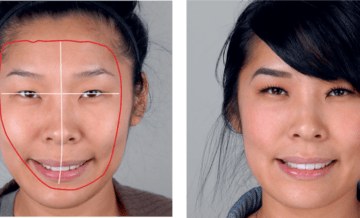
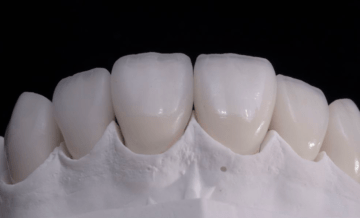
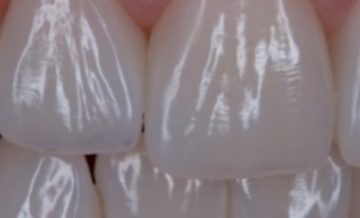
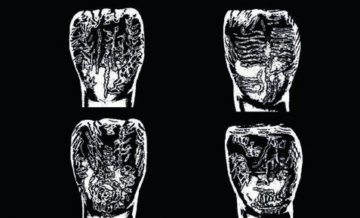
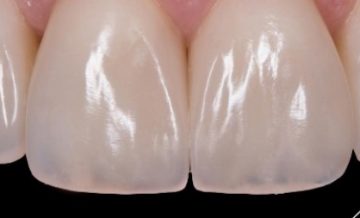





Комментарии могут оставлять только зарегистрированные пользователи.
Регистрация